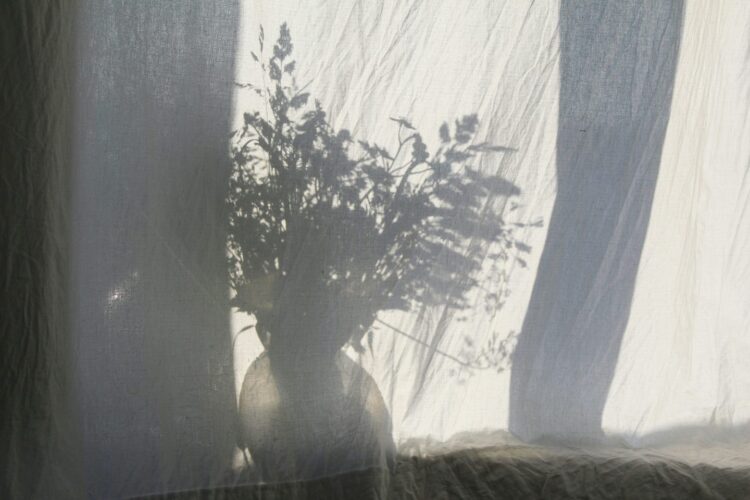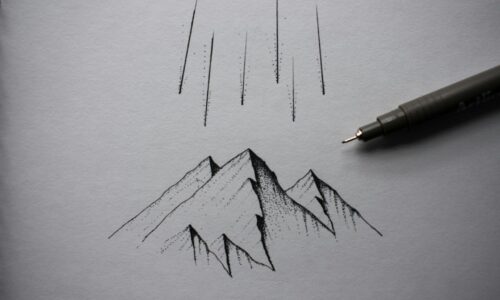Ever wonder what would happen if sculptures had their own mood lighting? Imagine if your favorite art piece could go from a serene abstract form to something dramatic or even whimsical, all with just the flick of a light switch or the spin of a spotlight. Welcome to the world of shadow play — where lighting is not just a backdrop, but a full-fledged co-conspirator, transforming sculptures into living, breathing works of art.
So, what’s the big deal with sculptures and shadows, you ask? Well, brace yourself. Sculptures that transform under different lighting are not only a feast for the eyes, they’re the coolest way to trick your brain and confuse your guests into questioning reality. Want to know how it works? Let’s dive into the wonderful world of shadow manipulation and its amazing impact on sculptures.
The Magic of Shadow Play: A Lesson in Sculptural Illusion
Imagine this: you walk into an art gallery, and you spot a seemingly normal sculpture. It’s all clean lines and geometric shapes — nothing out of the ordinary. But wait. You move a few steps to the left and boom — the sculpture transforms. The shadows cast on the wall reveal a completely different shape. What you thought was a simple figure now looks like a tangled mess or even a silhouette of something totally unexpected. You realize that the art isn’t just in the sculpture; it’s in the shadows too.
This is the heart of shadow play: manipulating light to reveal hidden dimensions of art. Lighting isn’t just about making things visible — it’s about creating an experience. When paired with sculptures, the shadow becomes a silent partner, turning each piece into something entirely new. It’s like discovering a new movie every time the light hits differently.
Bringing Sculptures to Life with Light
The beauty of shadow play lies in its versatility. Different lighting sources create different effects. A soft light might make a sculpture look delicate, while harsh light could make it appear sharp and edgy. Add a spotlight, and the shadows stretch and distort into elongated forms. Even changing the angle of the light can give the sculpture a completely new identity.
You can experiment with light in countless ways. Use the time of day to your advantage. Natural light can change throughout the day, allowing sculptures to morph under the ever-changing shadows. Or, get your hands on some artificial lighting options — like LED lights — that let you control the intensity and color.
When photography or lighting brands get involved, the results can be nothing short of mind-blowing. Imagine a collaboration with companies that specialize in shadow manipulation lighting. With their expertise and cutting-edge tools, you could be part of creating installations or exhibits that leave a lasting impression on visitors. Ever heard of The Art of Light by Danish artist Olafur Eliasson? His installations often blur the line between reality and illusion with the clever use of light. This is exactly the kind of magic you can achieve with a little creativity and the right lighting gear.
Why Shadows Matter: A Story of Transformation
Let’s talk about how shadows play tricks on your brain. Ever looked at a sculpture and thought it was one thing, only to realize it’s actually another? That’s the power of light and shadow. Think of it like an optical illusion — it’s not just the sculpture itself but how light changes its form, giving the illusion of depth, movement, or even emotion.
Take for example a sculpture of a simple tree. Under soft, diffused light, it might look serene and peaceful. But when you adjust the lighting to create sharp contrasts, the tree can take on a menacing or even chaotic form. The shadows cast by the branches might create eerie figures on the floor, making it seem like the tree has a life of its own.
For artists and designers, this is an exciting avenue to explore. Whether you’re creating your own sculptures or working with photographers, the possibilities are endless. Want to create a piece that looks different depending on the time of day? Or perhaps a sculpture that, when illuminated from one angle, becomes a different character entirely? Shadow play is your ticket to endless creative expression.
Sculpture Meets Photography: The Power of Collaboration
Speaking of photography, the relationship between sculpture and photography is more symbiotic than ever. Photographers can amplify the magic of shadow play by manipulating the lighting setup for maximum effect. By capturing a sculpture under various lighting conditions, they can bring out its hidden layers, turning a seemingly ordinary sculpture into a mysterious work of art.
Enter the lighting brands that specialize in this niche. Many photography equipment brands, like Profoto and Godox, offer versatile lighting kits designed to achieve dramatic shadow effects. These tools allow artists and photographers to experiment with light intensity, color temperature, and angles, producing a wide range of visual results. They’re perfect for anyone wanting to create sculptures that literally change under different lighting.
A Guide to Getting Started with Shadow Play
If you’re ready to explore the world of shadow play, here are a few tips to get you started:
- Start Simple — If you’re new to shadow play, begin with a basic sculpture and experiment with different lighting angles and intensities.
- Use Adjustable Lighting — Invest in adjustable lights, like LED panels or spotlights, which allow you to control light intensity and direction. Brands like Lume Cube offer portable and flexible lighting setups that are ideal for shadow play.
- Get Creative with Colors — Don’t be afraid to use colored lights. Color can radically change how shadows look, adding another layer of depth to your artwork.
- Consider the Space — Think about the space where the sculpture will be placed. The environment can have a huge impact on the shadows. A minimalistic white wall can make the shadows pop, while textured surfaces can add a whole new dynamic.
- Collaboration is Key — Partner with lighting experts or photographers who understand the intricacies of shadow manipulation. They can help elevate your sculptures to new heights.
Sculptures That Play with Shadows: The Future of Art
Incorporating shadows into sculpture isn’t just a trend — it’s the future of how we experience art. It’s a reminder that art is never static, and with the right lighting, every sculpture has a story to tell.
As artists and creators, we have the power to manipulate space and light, and in doing so, we can give new life to every sculpture. Shadow play isn’t just a technique; it’s an art form. It’s an invitation to experience art in a whole new way — and it’s one that’s sure to leave visitors wondering: What’s real and what’s just a shadow?
If you’re ready to dive into shadow play and elevate your sculptures, start experimenting with lighting today. Whether you’re working with a professional photographer or just playing around in your own studio, the possibilities are endless. And remember, in the world of sculpture and shadow play, there’s always more than meets the eye.
Shadow Play, Sculptures, Lighting Manipulation, Photography, Sculpture Lighting, Art Installations, Shadow Manipulation Lighting, Sculpture Photography, LED Lights, Shadow Art




